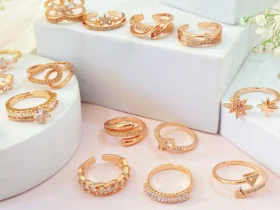In a time where digital streaming and portable music devices dominate, one might not expect a resurgence of the record player. Nevertheless, turntables and vinyl records have made quite amazing comebacks to capture the hearts of lovers old and young. Whereas once it was considered antiquated and out of style, the turntable is now indicative of nostalgia, authenticity, a kind of prized old popular music that was appreciated in its day. In this article, we’ll discuss its revival, the resurgence of the record player, how it has come to have cultural value, and the reasons behind its continued popularity in our digital age.
A Brief History of the Record Player
Phonographs have been around since the late 19th century. Thomas Edison invented one in 1877, and this marvellous gadget, unique for its time, was the first to successfully record and reproduce sound. It revolutionised music in that the common people had a chance to enjoy their favourite tunes anytime they wished. The early phonographs—still in a conceptual stage—were cylinders made of wax or metal that had to be rotated by hand to get going.
In the early 20th century, the phonograph evolved into a modern record player. By now, the flat, disc-shaped records were made of shellac or vinyl, and used a rotating turntable and stylus to play them back. The stylus rode on the grooves in your record, translating their motion into sound!
The record player as a household appliance really took off during the mid-20th century, in the time when vinyl albums flourished. There was hardly a home anywhere that did not have one. Thanks to technical improvements and mass production methods devised by engineers like Emil Berliner, who eventually came up with such innovative ideas as recording grooves instead of etching them by hand onto wax masters, Berliner’s other great invention—the gramophone—wasn’t so very different from Edison’s Pocket Phonograph except that it used interchangeable discs instead of cylinders as its recording medium.
From tape decks to compact disc players to the mp3 format that is now all the rage, recorded audio entered a new phase of its development at the end of this century. With the coming of these new mediums, people turned in their turntables for sleek new music players. Vinyl records have all but disappeared from popular music lists.
The Vinyl Revival: A Cultural Phenomenon
The renewed popularity of the record player has several causes:
- Nostalgia: Many people associate vinyl records with the nostalgia of browsing record stores, leafing through album covers, and carefully placing the needle on the record. The tactile feeling of handling vinyl records and the rite of an entire album, from start to finish, offer a special attraction for those who grew up with CD players.
- Collector’s Appeal: Operating with styluses for tracking grooves on individual vinyl strips has, to this day, maintained a special appeal for collectors, who are drawn by their convenience of possession, unique artwork, and close releases. This prompted a brand-new subculture of sorts: affluent music-lovers scouring flea markets, garage sales, and person-to-person selling catalogues for rare and coveted albums.
- Audio Quality: Despite the ease of digital music formats, vinyl records are renowned for their sound quality, which is in a different league, consequently becoming synonymous with warm tones, rich dynamics, and natural sound reproduction. Vinyl fans argue that this format provides a more authentic and immersive listening experience than an equivalent compressed digital audio can offer.
- Cultural Icon: The record player has moved beyond simple music player status to dispensary heralding a cultural icon and the symbol of hipster subculture. Vinyl albums, turntables, and all the trappings have now come to be synonymous with a retro aesthetic, distinctive fashion, and out-of-the-wayness, which young people can identify with authenticity seeking in a world swamped by digital instant-pop hits.
Technological Advancements in Turntable Design
While the resurgence of vinyl records and record players owes much to nostalgia and a very special cultural taste, there have been significant technological advancements that have helped drive the evolution of turntable design and performance. Modern turntables present a combination of timeless, straightforward phonography and practical features that make good sense, which aid in boosting functionality while enhancing and safeguarding reliability. Here are a number of key technological advancements in turntable design.
- Precision Engineering: Key to these advances are the precision-engineered components of modern turntables, such as tonearms, cartridges, and styli. Designed to minimise tracking errors and optimise sound reproduction, high-quality bearings, transports, and motor platters ensure smooth and even rotation. The result is accurate diacritical marks in playback with very little noise or distortion.
- Adjustable Features: Many modern turntables now offer adjustable features like tonearm height, tracking force excursions, and anti-skating settings, making it possible for users to tailor performance exactly to their requirements and the specific characteristics of their vinyl records. These adjustable features ensure perfect tracking and minimum wear on both the record and stylus.
- Integrated Technology: Some turntables now come directly equipped with built-in preamps, USB connectivity, and Bluetooth streaming capabilities. Users can digitise their LP collections, connect to external audio devices, or listen to music wirelessly through speakers or headphones using this integrated equipment. Such features significantly expand the versatility and functionality of modern turntables, unexpectedly making them compatible with a much broader range of audio systems or devices.
- Enhanced Isolation: To minimise vibration and extraneous interference from the environment, modern turntables incorporate advanced isolation such as shock-absorbing feet, heavyweight plinths, and vibration-damping materials. Able to keep one’s turntable in stable playback mode and, at the same time, reduce undesirable noise, these isolation features ensure cleaner and more accurate sound reproduction.
The Future of Vinyl and Turntables
Amid a vinyl revival still gathering pace, the future of vinyl records and turntables would appear to grow brighter by the day. Despite digital music streaming and downloads everywhere, there is a certain niche market for which long-play records now cater. Audiophiles, collectors, and simply musicians who love the feel and sounds of analogue music playback seem unlikely to go away anytime soon.
Looking forward, we can now say that in the music world, vinyl records and turntables will undoubtedly remain a familiar and much-loved art form for many years to come. By coexisting with digital formats, it is a place-oriented reminder of our lives before modern convenience. But as technology continually advances into the future, so does everything to do with turntables. New models are sure on their way to providing modern functions and performances that will still hold fast to the original analogue sound.
Conclusion
Ultimately, the resurgence of the record player is a testament to the enduring appeal of vinyl records and the timeless allure of analogue sound. It offers loyal fans magic in its purest form. Whether you’re an experienced collector, a casual listener, or simply someone who likes to listen for pleasure; this little machine has created its own nostalgic journey.
In summary, the resurgence of the record player is a move that can distinctly reap benefits for its maker and users alike. It not only reflects the present-day appetite for analogue sound in an increasingly digital world but also presents people with something new to treasure and something warm to share with others.







